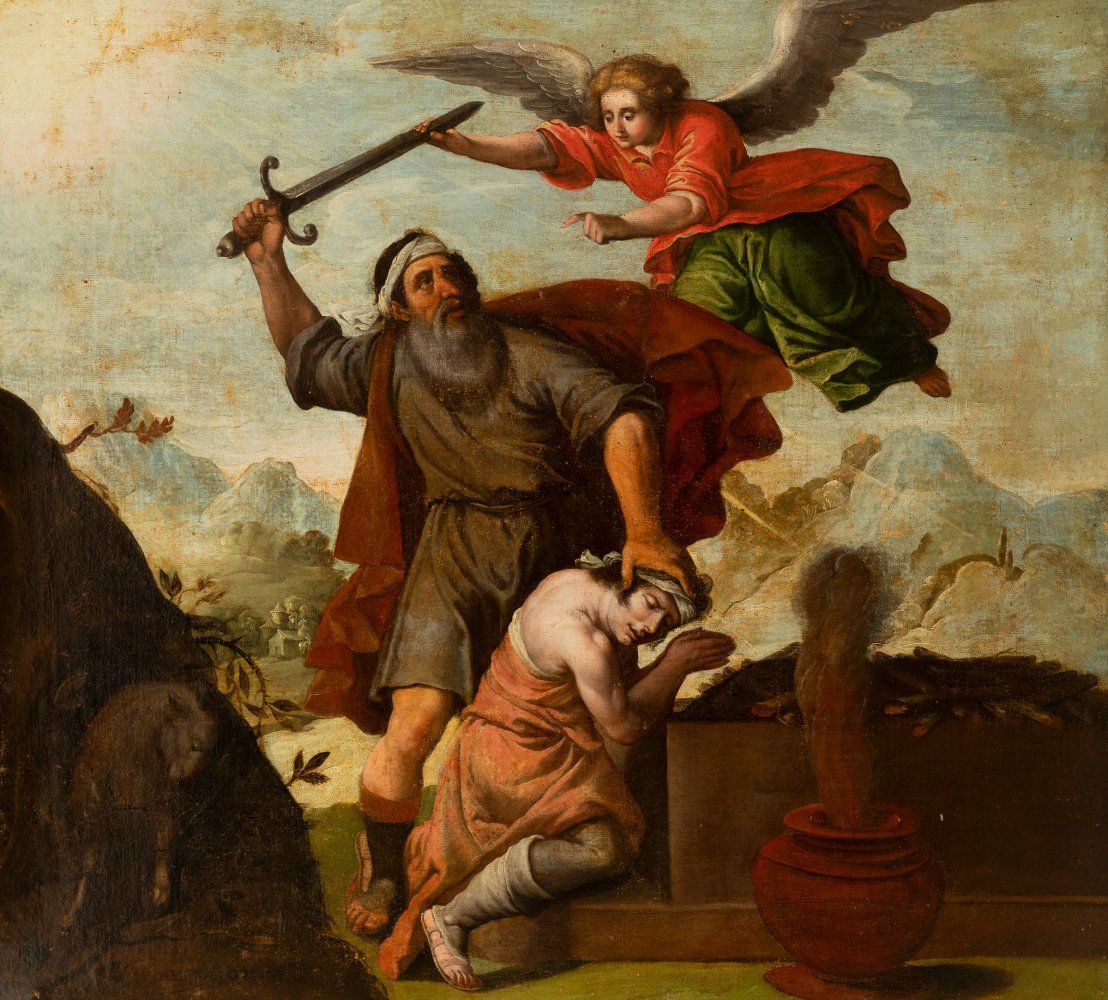Description
Sevillian school, first half of the 17th century. "The Sacrifice of Isaac". Oil on canvas. Relined. Period frame. Measurements: 100 x 109,5 cm; 111 x 121 cm (frame). The dramatic scene represented here relates the moment described in the Genesis in which Abraham is being stopped in his sacrificial action by an angel. The patriarch, following divine orders, was about to sacrifice his son Isaac. God, having ascertained Abraham's faithfulness to him, sends an angel to save the young man. This final moment of maximum tension is depicted in the present painting as in many other works of the period, the Baroque being a period in which pathos and drama are favoured at their peak. In Isaac's place, the lamb is sacrificed, here humbly awaiting its turn. The Lamb, in turn, symbolises Christ: a foreshadowing of his sacrifice for humanity. In the same vein, the altar and the pyre prefigure the cross. The main scene is in the foreground, with Isaac wrapped in a cloak, wearing sandals and prostrate before the sacrificial altar. His father holds his head with one hand while with the other he wields the sword, which is in turn being held by the angel. Behind them, a beautiful blue-tinted mountain landscape opens up. The bodies have been skilfully sculpted with luminous shifts, and their expressions convey the message with naturalistic precision: Isaac's obedient attitude and Abraham's hopeful gaze before the angel's arrival. The 17th century saw the arrival of the Baroque in the Sevillian school, with the triumph of naturalism over Mannerist idealism, a loose style and many other aesthetic liberties. At this time the school reached its greatest splendour, both in terms of the quality of its works and the primordial status of Sevillian Baroque painting. Thus, during the transition to the Baroque period, we find Juan del Castillo, Antonio Mohedano and Francisco Herrera el Viejo, whose works already display the rapid brushstrokes and crude realism of the style, and Juan de Roelas, who introduced Venetian colourism. In the middle of the century the period reached its peak, with figures such as Zurbarán, a young Alonso Cano and Velázquez.
31
Sevillian school, first half of the 17th century. "The Sacrifice of Isaac". Oil on canvas. Relined. Period frame. Measurements: 100 x 109,5 cm; 111 x 121 cm (frame). The dramatic scene represented here relates the moment described in the Genesis in which Abraham is being stopped in his sacrificial action by an angel. The patriarch, following divine orders, was about to sacrifice his son Isaac. God, having ascertained Abraham's faithfulness to him, sends an angel to save the young man. This final moment of maximum tension is depicted in the present painting as in many other works of the period, the Baroque being a period in which pathos and drama are favoured at their peak. In Isaac's place, the lamb is sacrificed, here humbly awaiting its turn. The Lamb, in turn, symbolises Christ: a foreshadowing of his sacrifice for humanity. In the same vein, the altar and the pyre prefigure the cross. The main scene is in the foreground, with Isaac wrapped in a cloak, wearing sandals and prostrate before the sacrificial altar. His father holds his head with one hand while with the other he wields the sword, which is in turn being held by the angel. Behind them, a beautiful blue-tinted mountain landscape opens up. The bodies have been skilfully sculpted with luminous shifts, and their expressions convey the message with naturalistic precision: Isaac's obedient attitude and Abraham's hopeful gaze before the angel's arrival. The 17th century saw the arrival of the Baroque in the Sevillian school, with the triumph of naturalism over Mannerist idealism, a loose style and many other aesthetic liberties. At this time the school reached its greatest splendour, both in terms of the quality of its works and the primordial status of Sevillian Baroque painting. Thus, during the transition to the Baroque period, we find Juan del Castillo, Antonio Mohedano and Francisco Herrera el Viejo, whose works already display the rapid brushstrokes and crude realism of the style, and Juan de Roelas, who introduced Venetian colourism. In the middle of the century the period reached its peak, with figures such as Zurbarán, a young Alonso Cano and Velázquez.
